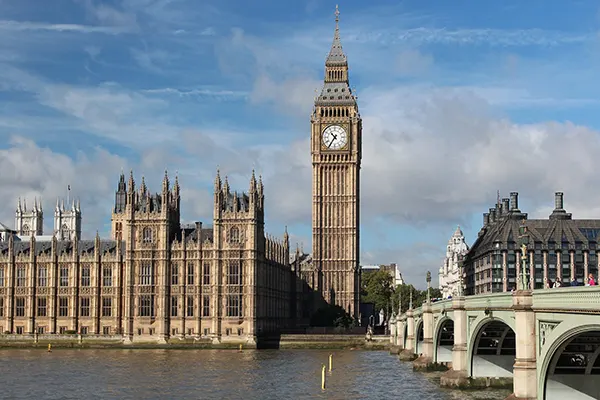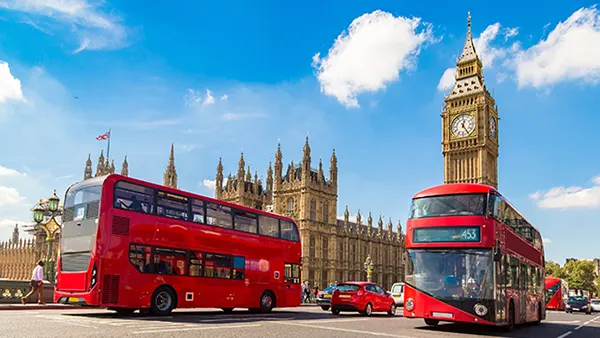
Big Ben and the Elizabeth Tower in London: History, Restoration, and Viewing Secrets
Few landmarks define London’s identity as powerfully as Big Ben and the Elizabeth Tower. Standing beside the River Thames, this Gothic masterpiece is not just a timekeeper but a witness to Britain’s history, politics, and cultural evolution. In 2025, the tower continues to fascinate visitors with its restored brilliance, advanced clock mechanism, and renewed visitor experience.
The Origins and Historical Significance
The construction of the tower began in 1843 and was completed in 1859 as part of Charles Barry’s design for the new Palace of Westminster. The clock and bell were created by Edmund Beckett Denison and George Airy, symbolising precision, reliability, and the spirit of Victorian engineering. From the moment it first chimed, Big Ben became a national icon and an audible representation of punctuality.
The name “Big Ben” originally referred only to the Great Bell inside the tower, weighing over 13.5 tonnes, but over time it became synonymous with the entire structure. During wartime, its sound reassured Londoners that the heart of democracy was still beating despite the chaos around them. Each strike of the bell carried a message of resilience and unity throughout Britain.
In 2012, the tower was officially renamed the Elizabeth Tower in honour of Queen Elizabeth II’s Diamond Jubilee. This renaming reinforced its symbolic role as a link between tradition and modern Britain, connecting generations through its unchanging presence.
Architectural Details and Clockwork Precision
The Elizabeth Tower stands 96 metres tall and features neo-Gothic design elements, including pointed arches, gilded details, and stone carvings. Its four clock faces, each 7 metres in diameter, are crafted from opal glass and framed with gilded ironwork, visible across the Westminster skyline. The tower’s intricate structure required nearly 850 cubic metres of stone and 2,600 cubic metres of brick.
The clock mechanism itself is a masterpiece of mechanical engineering. Designed by Denison and constructed by Edward John Dent, it remains accurate to within a few seconds each week, even after more than a century and a half of use. The famous pendulum, which weighs 300 kilograms, is adjusted using pre-decimal pennies to fine-tune the timekeeping.
To this day, the tower’s accuracy remains a matter of national pride. Technicians known as “keepers of the great clock” maintain and calibrate the mechanism using both traditional craftsmanship and digital technology introduced during the 2020s restoration.
The 2017–2022 Restoration Project
Between 2017 and 2022, the Elizabeth Tower underwent its most comprehensive restoration since its completion. The £80 million project addressed decades of weather damage, pollution, and structural wear. It involved replacing corroded ironwork, restoring the clock dials to their original Prussian blue colour, and strengthening the masonry for future generations.
One of the key objectives was sustainability. The restoration introduced energy-efficient lighting, improved ventilation, and a new digital monitoring system to track temperature and humidity inside the tower. This ensures both the preservation of the structure and the safety of the clock mechanism.
During the works, Big Ben’s chimes were largely silenced to protect workers from noise levels exceeding 120 decibels. The final restoration revealed details unseen for decades, including ornate carvings and gilding that had faded under layers of soot. In 2025, the tower stands renewed—faithful to its heritage yet equipped for the modern era.
Challenges and Innovations
The restoration posed major engineering challenges due to the tower’s height and historic fabric. Every piece of scaffolding had to be individually designed to prevent damage to the masonry. Conservationists used 3D scanning to document every stone before intervention, ensuring absolute accuracy in reconstruction.
Modern materials such as stainless steel were used discreetly to replace corroded components, improving durability without altering the original appearance. Each clock face was dismantled and reassembled using over 1,300 individual glass pieces, each hand-cleaned and inspected for imperfections.
Perhaps the most symbolic moment came in late 2022 when Big Ben’s chimes returned to mark the new year. It signalled the completion of a monumental project combining artistry, science, and respect for heritage—a balance that defines the essence of modern British restoration work.

Visiting and Viewing Secrets in 2025
By 2025, guided tours of the Elizabeth Tower have resumed, allowing visitors to climb the 334 steps to the belfry. Tours must be pre-booked through the UK Parliament website and are available only to UK residents for security reasons. However, international tourists can admire the tower from several strategic viewpoints offering exceptional photographic opportunities.
One of the best vantage points is Westminster Bridge, where the tower reflects in the Thames during sunset. Another is Victoria Embankment Gardens, offering a quieter setting away from the crowds. Night-time views are particularly striking thanks to the tower’s new LED illumination, which highlights its stonework with subtle golden hues.
Visitors are also encouraged to explore the adjoining Palace of Westminster, a UNESCO World Heritage Site. Nearby attractions such as St James’s Park, Westminster Abbey, and the Churchill War Rooms offer a deeper understanding of London’s political and cultural landscape, enriching the experience of seeing Big Ben in context.
Practical Information for Visitors
Those wishing to hear Big Ben’s chime in person should plan to be nearby on the hour. Public transport links are excellent, with Westminster Underground Station just steps away. The area is also pedestrian-friendly, with designated viewing points and accessible pathways.
Photography is allowed from outside the tower, but interior photos are restricted for preservation and security reasons. Visitors should be prepared for unpredictable British weather, as the open areas around Westminster can be windy.
In 2025, the Elizabeth Tower remains not just a monument but a living symbol of British craftsmanship, endurance, and history. Whether seen from the river or beneath its great clock face, Big Ben continues to measure not just time, but the rhythm of a nation.
Popular articles
-
 Depression Danakil: Ethiopia’s Fierce and Haunting Landscape
Depression Danakil: Ethiopia’s Fierce and Haunting LandscapeThe Danakil Depression in Ethiopia is often described as one …
-
 Coimbra, Portugal — A Student City Shaped by Centuries of Academic Tra...
Coimbra, Portugal — A Student City Shaped by Centuries of Academic Tra...Coimbra stands as one of Portugal’s most influential cultural and …
-
 Big Ben and the Elizabeth Tower in London: History, Restoration, and V...
Big Ben and the Elizabeth Tower in London: History, Restoration, and V...Few landmarks define London’s identity as powerfully as Big Ben …
